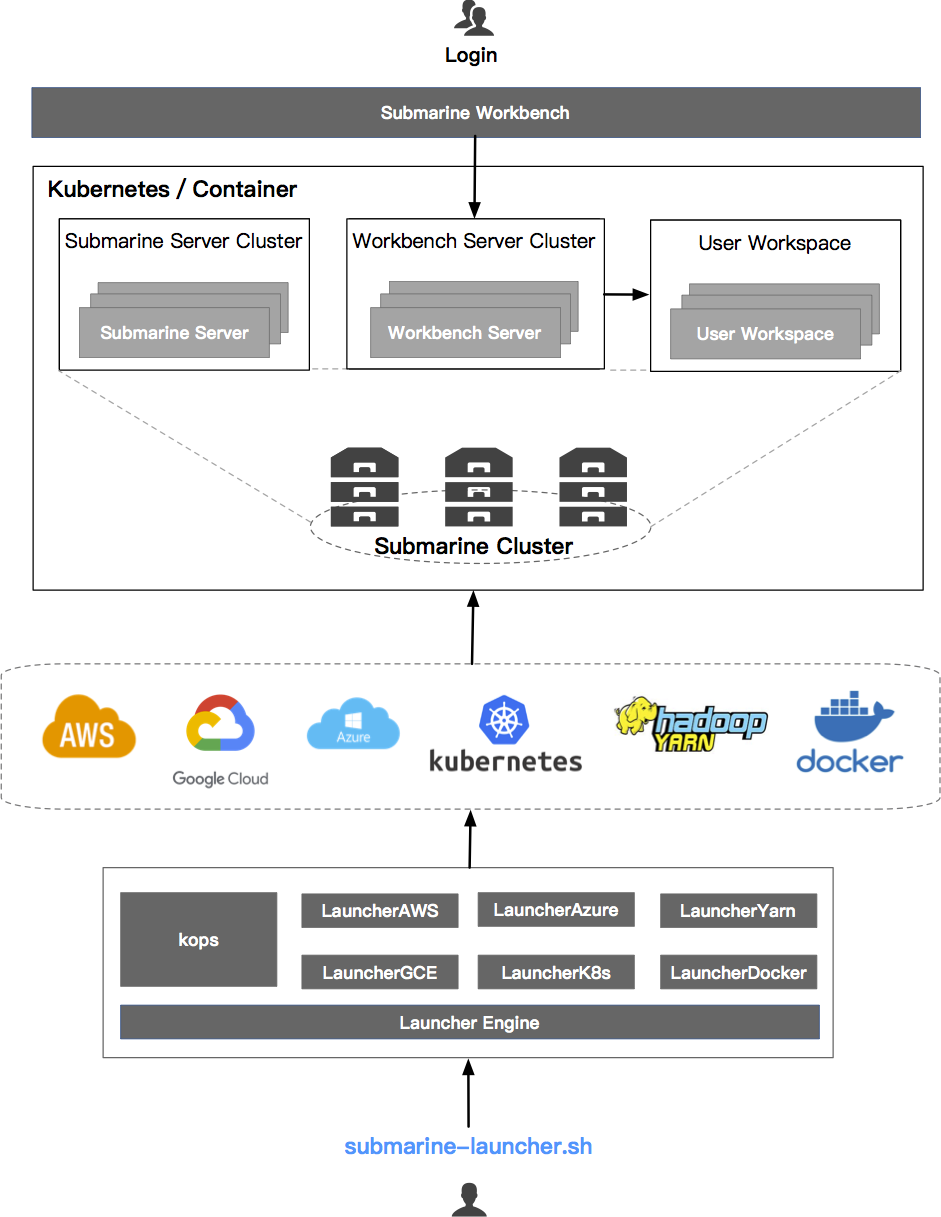Submarine Launcher
warning
Please note that this design doc is working-in-progress and need more works to complete.
Introduction
Submarine is built and run in Cloud Native, taking advantage of the cloud computing model.
To give full play to the advantages of cloud computing. These applications are characterized by rapid and frequent build, release, and deployment. Combined with the features of cloud computing, they are decoupled from the underlying hardware and operating system, and can easily meet the requirements of scalability, availability, and portability. And provide better economy.
In the enterprise data center, submarine can support k8s/docker three resource scheduling systems; in the public cloud environment, submarine can support these cloud services in GCE/AWS/Azure;
Requirement
Cloud-Native Service
The submarine server is a long-running services in the daemon mode. The submarine server is mainly used by algorithm engineers to provide online front-end functions such as algorithm development, algorithm debugging, data processing, and workflow scheduling. And submarine server also mainly used for back-end functions such as scheduling and execution of jobs, tracking of job status, and so on.
Through the ability of rolling upgrades, we can better provide system stability. For example, we can upgrade or restart the workbench server without affecting the normal operation of submitted jobs.
You can also make full use of system resources. For example, when the number of current developers or job tasks increases, The number of submarine server instances can be adjusted dynamically.
In addition, submarine will provide each user with a completely independent workspace container. This workspace container has already deployed the development tools and library files commonly used by algorithm engineers including their operating environment. Algorithm engineers can work in our prepared workspaces without any extra work.
Each user's workspace can also be run through a cloud service.
Service discovery
With the cluster function of submarine, each service only needs to run in the container, and it will automatically register the service in the submarine cluster center. Submarine cluster management will automatically maintain the relationship between service and service, service and user.
Design

Launcher
The submarine launcher module defines the complete interface. By using this interface, you can run the submarine server, and workspace in k8s / docker / Rancher / OpenShift / AWS / GCE / Azure.
Launcher On Docker
In order to allow some small and medium-sized users without k8s to use submarine, we support running the submarine system in docker mode.
Users only need to provide several servers with docker runtime environment. The submarine system can automatically cluster these servers into clusters, manage all the hardware resources of the cluster, and run the service or workspace container in this cluster through scheduling algorithms.
Launcher On Kubernetes
submarine operator
Launcher On Rancher
This section is currently described based on the Rancher Desktop.
Since we have replaced Traefik with Istio from 0.8.0, we need to turn off the Traefik in Kubernetes Settings.
At the same time, we need to set kubernetes version to 1.21+, the minimum CPUs to 4, and the minimum Memory to 8G.
Rancher Desktop use Local Path Provisioner as the provisioner for StorageClass by default, so we need to modify the relevant configuration of StorageClass when using Helm to install Submarine.
storageClass:
volumeBindingMode: WaitForFirstConsumer
provisioner: rancher.io/local-path
For other installation, please refer to Launch submarine in the cluster. In addition, we can use kube-explorer to open Rancher Dashboard.
Launcher On OpenShift
[TODO]
Launcher On AWS
[TODO]
Launcher On GCP
[TODO]
Launcher On Azure
[TODO]